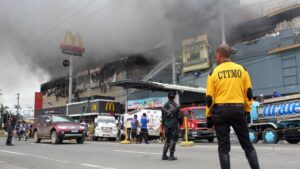Introduction: What Really Happens When a Building Catches Fire
When a fire breaks out in a building, everything changes in seconds. Smoke floods corridors, temperatures soar above 600°C, and visibility drops to near-zero. People don’t walk — they panic. Elevators shut down, stairwells fill with smoke, and in just a few minutes, entire floors become uninhabitable.
In these critical moments, occupants rely entirely on the building’s fire safety systems — assuming sprinklers will activate, alarms will guide evacuation, and fire exits will be usable. But what if that assumption is wrong?
The uncomfortable truth is that fire safety in India is often just an illusion. Aesthetic sprinklers might be in place, but disconnected. Fire alarms might be installed, but never tested. Passive protection? Often skipped entirely in the name of “cost optimization.” As fire spreads across ducts, cable trays, false ceilings, and structural steel, the real question becomes:
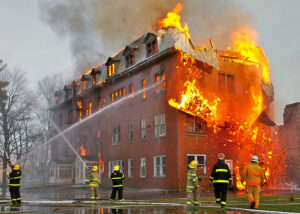
What’s actually protecting the structure when every second counts when the active systems fail?
The Sprinkler Myth: Why You Can’t Rely on Them
Walk into any modern building — a mall, hospital, airport, or office tower — and you’ll spot them: rows of ceiling-mounted sprinklers, quietly reassuring everyone that in case of fire, they’ll activate and save lives. It’s a comforting image, but unfortunately, it’s a myth.
The idea that sprinklers alone can protect a building during a fire is dangerously flawed. These systems are designed to activate under very specific conditions — typically when a fire builds up enough heat to trigger a single sprinkler head. And that’s exactly the problem.
Sprinklers only respond to direct, high heat. If a fire starts in a hidden space — inside an HVAC duct, behind a false ceiling, in an electrical shaft, or within a cable riser — the system doesn’t activate. If the fire involves flammable liquids, PVC cables, or electrical equipment, water may not suppress it at all. By the time the heat builds up enough to trigger the nearest sprinkler, the flames may already be out of control — especially in buildings filled with synthetic materials and layered construction.
Even when they do activate, sprinklers are limited in scope. Only the nearest head opens, covering a small radius, while smoke and flames continue to spread elsewhere. In high-rise buildings, water pressure often fails to reach the top floors effectively. And more often than not, there’s no monitoring system to confirm whether the water supply is pressurized, whether the valves are open, or whether the system was ever tested after installation.
But perhaps the most dangerous part is the false sense of security they create. Sprinklers tick the compliance box. They look official. Inspectors see them and move on. Occupants assume they’re protected. Consultants call the job “fire safe.” And no one realizes the system may not function — or may be completely irrelevant to the type of fire that breaks out.
In India, this is not an exception. It’s the rule.
Fires don’t follow ideal conditions. They start where they want, spread how they want, and escalate in minutes. Yet we continue to rely on a system that only works under textbook conditions, if maintained, and if the fire behaves. That’s not protection — that’s wishful thinking.
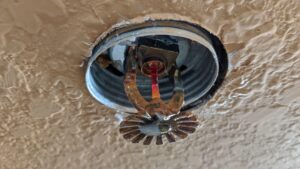
The Illusion of Compliance: India’s Fire Safety Audits Tell a Grim Story
Most buildings in India look safe from the outside—think rows of sprinklers, illuminated fire exits, and extinguishers on walls. But these visible symbols of “safety” often hide a harsh truth: compliance is frequently superficial.
🔍 Delhi: Compliance, But Not Operational
A June 2025 report by Delhi Fire Service revealed that many residential and institutional buildings fail to maintain their systems after obtaining initial NOCs. Fire officers reported that high-rise apartments often meet norms only during the first inspection; deficiencies emerge in later checks, and many renewal NOCs lapse completely. This neglect translates into non-functional sprinklers, inactive fire alarms, and expired extinguishers The Times of India.
🏢 Mumbai: Nearly 40% of High-Rise Fires Had No Operational System
Between January 2020 and October 2021, of the 324 high-rise fires responded to by the Mumbai Fire Brigade, 127 buildings (39.2%) had no functional fire-fighting system at the time of the fire. Even in buildings where systems existed, audits showed they were often poorly maintained or never tested Hindustan Times.
🏬 Link Square Mall Fire: Auditors Missed It All
Following the April 2024 Link Square Mall blaze—a fire that burned for over 21 hours—the BMC’s investigation unearthed serious audit failures. Bi‑annual safety checks failed to identify non-operational systems like sprinklers and alarms. The licensed auditing agency did not flag these issues, allowing a hazardous building to pass muster—only for disaster to strike later The Times of India.
🛑 Fire NOC Compliance is Often Misleading
Even basic compliance is often not assured. In Delhi, among nearly 900 Cooperative Group Housing Societies (CGHS), only 101 had valid fire NOCs as of May 2025. Applications from others were rejected or never filed—suggesting widespread non-compliance even among buildings legally required to maintain them The Times of India+2Hindustan Times+2builtxsdc.com+2.
🧾 Summary Table
| Audit Finding | Source / Statistic |
| ~60% of Delhi’s commercial buildings have non-functional fire systems on repeat checks | Delhi Fire Service audits |
| ~39% of high-rise buildings lacked operational systems during actual fires | Mumbai Fire Brigade data Hindustan Times |
| Nearly half of inspected Mumbai buildings failed basic fire safety audit | BMC post‑Link Square fire report The Times of India |
| 101 out of 900 housing societies had valid fire NOCs in Delhi as of May 2025 | Cox of DFS data Hindustan Times |
These figures show a systemic issue—not a few isolated cases. Buildings are ticking compliance boxes, but when systems fail—or worse, never existed in working condition—safety becomes an illusion rather than reality.
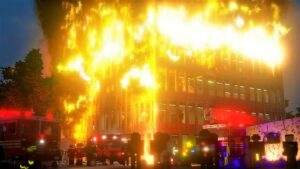
He Truth About Passive Fire Protection — Always On, Always Ready
In a fire emergency, there is no time for systems to think, activate, or wait for commands. The fire doesn’t pause. It moves fast, often unpredictably — spreading across ducts, behind walls, and through structural voids. In that moment, the only thing that truly works is what’s already working.
This is the role of passive fire protection — and it’s the most misunderstood part of modern fire safety.
Unlike sprinklers or alarms, passive protection doesn’t depend on sensors or electricity. It doesn’t need water tanks or someone to switch it on. It’s built into the structure — coatings, barriers, sealants — and it starts doing its job the moment a fire begins.
When applied properly, passive systems can:
- Prevent structural collapse by protecting steel from heat
- Stop smoke and flames from moving through ducts, cable trays, and risers
- Buy precious minutes for people to escape and for firefighters to respond
- Keep the damage localized, preventing the entire building from being consumed
It’s not reactive. It’s proactive. It’s not a backup plan. It’s part of the foundation.
But Doesn’t It Ruin the Aesthetics?
This is a common myth — and one that’s keeping buildings dangerously exposed.
Today’s fire-resistant coatings are engineered to blend in. They can be clear, smooth, paint-matched, or completely concealed. Whether it’s a luxury hotel lobby, a data center, or a hospital operating room, fire coatings can be applied in a way that protects without ever being seen.
In fact, in many buildings, they’re already present — behind the scenes, quietly holding the line when every other system has failed.
Passive protection doesn’t trigger an alarm. It doesn’t make noise.
But when fire breaks out, it’s the one system that’s already doing its job — no matter what.
What’s Missing — and Why It’s Being Left Out
By now, it’s clear that passive fire protection plays a critical role in saving lives. And yet, in project after project, it’s quietly removed, value-engineered out, or never even considered. The reason isn’t complicated. In many cases, it comes down to cost, convenience, or a lack of awareness.
On paper, fire-resistant coatings may seem like an “add-on” — a few extra lakhs that don’t directly affect the visual outcome of a building. So when budgets tighten, or bids become competitive, passive protection is often the first thing to go. After all, sprinklers and extinguishers are visible. They check the compliance boxes. Coatings don’t. And that invisibility becomes a liability — not in function, but in perception.
The Low-Bid Trap
In India’s construction ecosystem, the pressure to place the lowest bid is real — whether it’s for a government contract, a private tower, or a public utility project. Fire-resistant coatings don’t always make it to the final BOQ. And if they do, they’re often listed without detail or scope. That leaves room for substitution, postponement, or outright elimination — quietly, and often without consequence.
Until the day a fire breaks out.
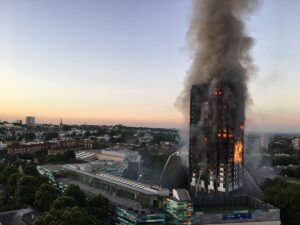
Compliance vs. Protection
Most buildings technically comply with fire norms. But compliance is not the same as preparedness.
A building might pass inspection with visible sprinklers and extinguishers — but still lack fire-rated ductwork, coated steel, or sealed risers. These are the elements that truly stop a fire from spreading, that protect escape routes, that prevent structural collapse. But they’re hidden. So they’re overlooked.
And when they’re left out, they take real safety with them.
Fire doesn’t check the budget before it spreads. It doesn’t care about bid margins or deadlines.
It only respects what’s built to withstand it — and too often, we choose not to build that in.
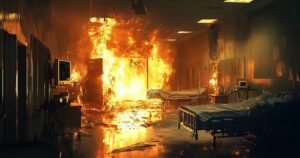
Ameetuff’s Solutions — Built for Buildings That Can’t Afford to Fail
In fire protection, assumptions cost lives. That’s why Ameetuff offers certified, tested, and government-approved solutions — built not for show, but for performance.
For over 35 years, our passive fire protection systems have been trusted across India’s most critical infrastructure — from Parliament buildings to oil refineries — because when everything else fails, our coatings still hold.
Applications That Matter
- Structural Steel Coatings
CBRI, CSIR, and Government of India lab approved coatings that deliver up to 4 hours of fire resistance. Compliant with BS 476 Part 21, these systems protect load-bearing steel from heat-induced collapse. Used in the New Parliament, Konkan Railway Tunnels, and Seabird Naval Base. - Duct and Shaft Coatings
CBRI, CSIR, and Government of India lab approved fire-resistant coatings for GI ducts and HVAC shafts. Compliant with BS 476 Part 24, these prevent internal flame spread and cross-zone smoke migration. Applied in airports, hospitals, and commercial towers. - Cable & Conduit Coatings
CBRI, CSIR, and Government of India lab approved intumescent coatings designed for electrical and communication cables. These coatings block flame travel along vertical risers and reduce smoke density. Compliant with IEC 60331, IS 12459, and BS 476. - Wood and Interior Surface Protection
CBRI, CSIR, and Government of India lab approved fire-retardant coatings available in both clear and pigmented variants. These protect wooden panels, doors, and partitions without compromising aesthetics — ideal for hotels, heritage spaces, and public venues. - Fire Stop Barrier Systems
CBRI, CSIR, and Government of India lab approved stuffing compounds, sealants, and barriers used to block fire and smoke spread through cable trays, floor openings, and wall penetrations. Trusted in metro stations, data centers, and government buildings.
Tested. Certified. Trusted.
Every Ameetuff product is tested and approved by:
- CSIR-CBRI Roorkee
- Government of India-recognized laboratories
- Compliant with BS 476, ASTM, IEC, and IS standards
When you choose Ameetuff, you’re choosing fire protection backed by science — not assumptions.
Conclusion: Fire Doesn’t Forgive. Protection Must Be Real.
We’ve seen it too many times — buildings that looked safe on paper, equipped with sprinklers and alarms, still become the site of tragedy when a real fire breaks out. Systems don’t activate. Maintenance is ignored. Lives are lost not because protection was impossible — but because it was assumed.
The truth is simple: fire protection isn’t just about compliance. It’s about performance.
Sprinklers can fail. Alarms can be silenced.
But passive fire protection — when applied correctly — does not wait, does not fail, and does not require activation. It’s always there, built into the very fabric of the structure, holding the fire back when everything else gives out.
For too long, we’ve relied on visual safety over real safety. On ticking checkboxes instead of asking hard questions.
It’s time that changes.
Whether it’s structural steel, ducts, cables, or interior woodwork — fire doesn’t discriminate, and it doesn’t wait for approvals or excuses.
It’s time we stop designing for inspection reports — and start designing for survival.
Ameetuff’s fire protection systems are tested. Certified. Government-approved.
And most importantly — they’re built for the moment when everything else fails.
